- Luật
- Hỏi đáp
- Văn bản pháp luật
- Luật Giao Thông Đường Bộ
- Luật Hôn Nhân gia đình
- Luật Hành Chính,khiếu nại tố cáo
- Luật xây dựng
- Luật đất đai,bất động sản
- Luật lao động
- Luật kinh doanh đầu tư
- Luật thương mại
- Luật thuế
- Luật thi hành án
- Luật tố tụng dân sự
- Luật dân sự
- Luật thừa kế
- Luật hình sự
- Văn bản toà án Nghị quyết,án lệ
- Luật chứng khoán
- Video
- NGHIÊN CỨU PHÁP LUẬT
- ĐẦU TƯ CHỨNG KHOÁN
- BIẾN ĐỔI KHÍ HẬU
- Bình luận khoa học hình sự
- Dịch vụ pháp lý
- Tin tức và sự kiện
- Thư giãn

TIN TỨC
fanpage
Thống kê truy cập
- Online: 223
- Hôm nay: 198
- Tháng: 1621
- Tổng truy cập: 5245625
Dreams of Empire - PETER BERGER
The americain interest
Chinese President Xi has found in Confucianism (as he understands it) an ideology useful to the construction of a Chinese model of modernity—which is intended to contribute to the task of empire-building.
Published on: August 5, 2015
CHINA'S RISE
On July 25, The Economist in its regular Asia section had two stories about religion in China. Both should be read in the context of the centralizing of power in the hands of Xi Jinping, who within just a few years has personally acquired the most important titles in the Chinese regime—General Secretary of the Communist Party of China (2012), President of the People’s Republic of China (2013), and Chairman of the Central Military Commission (2013). Still missing: Emperor of the Middle Kingdom, under the Mandate of Heaven. A modest suggestion: Just wait!
Not since Mao Zedong has so much power been vested in one man. Any hopes that some people may have had in a liberalizing of the regime under the ever-smiling Xi have been disappointed. The only liberalizing factor is that the growth-generating capitalist economy is allowed to roar on, just as long as the monopoly of power by the Communist Party is not challenged by any element of “civil society.” Domestically, lawyers and human rights activists have been harassed, the regime maintains its tight control over the media, the judiciary, and academia, and the ritual affirmation of Marxist ideology continues to be maintained (though it may be questioned how much this ideology has anything to do with classical Marxism—or is really believed by anyone). In foreign policy, China increasingly acts with the self-confidence of a rising power and seeks to extend its influence globally. It has enormously increased the claimed extent of its territorial waters, thus creating animosity and alarm among all other states bordering the South and EastChinaSeas, especially Japan, which Beijing keeps challenging with provocative moves. Despite its proclaimed allegiance to a “peaceful ascent” (a very Confucian notion—as it that of a “harmonious society”), China is rapidly building up its military capabilities. This is quite openly explained as a challenge to America’s alleged “pivot toward Asia” (the U.S. is rudely described as a declining power in the Chinese media).
The first Economist story describes growing the cult of Confucius, especially around his tomb in Qufu. This started some years ago in a sharp reversal of the official condemnation of Confucianism as a reactionary ideology (the condemnation reached its climax during the Cultural Revolution). Xi Jinping has explicitly endorsed this development in a statement put on a tablet at the Qufu sanctuary: “In the spread of Confucianism around the world, China must fully protect its right to speak up.” In 2014 Xi convoked a “collective study session” of the Politburo (the ruling body of the Communist Party) devoted to “Chinese traditional culture” (read: Confucian culture). Ever since, the poor Party officials have had to work hard to show a strong link between Confucianism and Marxism. This may seem like a challenging intellectual task, unless (as I tend to think) one actually translates Marxist concepts into the ritual formulas of Confucian li—which have no cognitive content beyond their ceremonial uses (that is, one correctly pronounces them regardless of what one actually believes about their relation to actual reality). (I will readily retract this interpretation if it is shown to be mistaken by a certified Sinologist!) Incidentally, the term “Confucian Institutes” has been used for some time by the international network of Chinese language schools (an exercise of China’s “civilizing mission”).
Long before this political embrace of the classical sage there has an international scholarly movement called the New Confucianism. Its leading scholar has been Tu Weiming, who spent much of his academic career as a professor of Chinese philosophy at Harvard. He has now become the director of the Institute for Advanced Humanistic Studies in Beijing, which has become a major Confucian center. In the 1990s the government of Singapore, worried that there was no shared moral orientation for the great economic success of the city state, initiated a program to develop such a curriculum for its public schools. Given the religious diversity of Singapore’s population, the curriculum was to have Confucian, Buddhist, Christian, and Muslim components. Tu Weiming was one in a group of Western academics asked to help develop the Confucian curriculum; it had to be in English, since that was the only language understood by many children of the ethnic Chinese majority. As Tu Weiming has described this project, the government was surprised and disappointed by the fact that most Chinese parents opted for the Christian curriculum. Despite this outcome, the Singapore government has continued to advocate “Asian values”, at their core such Confucian principles as respect for authority, “filial piety”, hard work, honesty, and “human-heartedness.”
The second Economist story deals with a further development of something I discussed in an earlier post on this blog—the anti-Christian campaign in the city of Wenzhou (which has the highest percentage of Christians, mostly Protestants, of any locality in China). It began with an order by the local authorities to remove all crosses from the roofs of churches—there was a veritable skyline of such crosses in the city known as the “Chinese Jerusalem”. Thus far about 1,200 crosses have been taken down. When some congregations disobeyed the order, entire church buildings were destroyed. Supposedly this was done because of violations of the building code, but statements by the provincial Party chief, known for his hatred of Christians, made clear that he wanted to reduce the influence of religion. There has been speculation as to whether this was only a local phenomenon or was directed by the central government. Given the centralization of power under the Xi Administration, it is hard to believe that he did not know about this and at least discretely approved of it. My hunch is that Wenzhou was to be a pilot project for a larger campaign to reduce the growth of Christians (it is estimated that there are now more Christians than members of the Communist Party). But there is a new wrinkle to this story: Previous harassments of Christians have focused on so-called “house churches”—that is, churches not registered and allowed by the authorities. But the Wenzhou campaign has also targeted the registered group. Now the two official bodies representing the registered churches—the Protestant Christian Council and the Catholic Patriotic Association—have sent an open letter to the provincial government sharply protesting the actions against all Christian churches, not just their own. Thus the Wenzhou episode may have a result opposite to the one intended—a consolidation of all Christians in opposition to a government policy.
In terms of government policies, Christians have long been a special case. They are suspect because of their foreign provenance (especially the Catholics with their allegiance to Rome), and because some of them (especially Presbyterians) have actively supported democratization in South Korea and Taiwan. On the other hand they (especially Protestants) are deemed to be good for modern economic development. When a few years ago I had a conversation with the director of the State Administration of Religious Affairs in Beijing, I was intrigued when he approvingly quoted Max Weber on the Protestant ethic and the spirit of capitalism. Also, Christianity has no links with possibly secessionist (“splittist”) ethnic groups, unlike Buddhism in Tibet and Islam in Xinjiang. The Chinese historical memory has a keen sense of the dangers of religious fanaticism, such as was expressed by the Taiping Rebellion in the late 19th century, which was led by a charismatic leader who called himself the younger brother of Jesus Christ, and which cost twenty million lives before it was suppressed by the so-called “Ever-Victorious Army”, commanded by Charles Gordon, a British officer ever since known as “Chinese Gordon” (he was later killed during the siege of Khartoum by the Mahdi, yet another religious prophet; Gordon himself was a Bible-reading Protestant not intimidated by all these religious maniacs). Again (with all due deference to others with better Sinological qualifications) I’ll express the hunch that the attitude toward religion of the present People’s Republic has deeply Confucian roots—the educated mandarin (in this case spouting the rhetoric of “scientific atheism”) regards all religion as superstitious nonsense, potentially dangerous, and best dealt with by a method of disease control. Above all it must not be allowed to establish alternate centers of power. Falun Gong, an essentially harmless practice of traditional Chinese tai chi combined with Buddhist-derived breathing exercises, drove the government into a paranoid reaction when a conference promoting this therapy managed to convene some ten thousand attendees in Beijing—without any government agency even knowing about it! Falun Gong has since then be designated an “evil cult” and a threat to public health, and has been brutally suppressed. It is not difficult to imagine the discussions of the pros and cons of Christianity going on today in the inner circles of Communist power, almost certainly involving the elite gathered around Xi Jinping.
As readers of this blog know, I have a fervent belief in the value of comparisons. In this case I’m struck by the similarity between three countries in which I have been very interested—Xi’s China, Putin’s Russia, and Erdogan’s Turkey. Here we have three increasingly authoritarian regimes, with reasonably successful market economies, now using religion to legitimate their rule. Xi has found in Confucianism (as he understands it—Tu Weiming may disagree) a usable ideology for a synthesis of traditional culture and modernity. Putin has a deepening relationship with the Russian Orthodox Church, of great mutual benefit (the Moscow Patriarch blesses everything done by Putin, who represses religious rivals of the Patriarch). Putin also envelops the Kremlin in tsarist symbolism, and presents Orthodoxy as a bulwark against the moral degeneracy of the West. And the Erdogan Administration in Turkey can plausibly be perceived as a neo-Ottoman project. The late Israeli sociologist Shmuel Eisenstadt has coined the useful concept of “multiple modernities.” Western modernity is not the only possible model (Eisenstadt closely analyzed the Meiji regime in 19th-century Japan, which engineered a very rapid modernization process, while retaining many traditional cultural and religious features—some surviving to this day). Following Eisenstadt’s approach, one may look at the three aforementioned cases as efforts to construct, respectively, a Chinese, a Russian, and a Turkish model of modernity—each intended to contribute to the task of empire-building. (To say this is purely descriptive; it implies neither approval nor disapproval of these projects.)
China, East Asia and history
Xi’s history lessons

IN EARLY September President Xi Jinping will take the salute at a huge military parade in Beijing. It will be his most visible assertion of authority since he came to power in 2012: his first public appearance at such a display of missiles, tanks and goose-stepping troops. Officially the event will be all about the past, commemorating the end of the second world war in 1945 and remembering the 15m Chinese people who died in one of its bloodiest chapters: the Japanese invasion and occupation of China of 1937-45.
It will be a reminder of the bravery of China’s soldiers and their crucial role in confronting Asia’s monstrously aggressive imperial power. And rightly so: Chinese sacrifices during that hellish period deserve much wider recognition. Between 1937, when total war erupted in China, and late 1941, when the attack on Pearl Harbor brought America into the fray, China fought the Japanese alone. By the end of the war it had lost more people—soldiers and civilians—than any other country bar the Soviet Union.
Yet next month’s parade is not just about remembrance; it is about the future, too. This is the first time that China is commemorating the war with a military show, rather than with solemn ceremony. The symbolism will not be lost on its neighbours. And it will unsettle them, for in East Asia today the rising, disruptive, undemocratic power is no longer a string of islands presided over by a god-emperor. It is the world’s most populous nation, led by a man whose vision for the future (a richer country with a stronger military arm) sounds a bit like one of Japan’s early imperial slogans. It would be wrong to press the parallel too far: China is not about to invade its neighbours. But there are reasons to worry about the way the Chinese Communist Party sees history—and massages it to justify its current ambitions.
History with Chinese characteristics
Under Mr Xi, the logic of history goes something like this. China played such an important role in vanquishing Japanese imperialism that not only does it deserve belated recognition for past valour and suffering, but also a greater say in how Asia is run today. Also, Japan is still dangerous. Chinese schools, museums and TV programmes constantly warn that the spirit of aggression still lurks across the water. A Chinese diplomat has implied that Japan’s prime minister, Shinzo Abe, is a new Voldemort, the epitome of evil in the “Harry Potter” series. At any moment Japan could menace Asia once more, party newspapers intone. China, again, is standing up to the threat.
As our essay on the ghosts of the war that ended 70 years ago this week explains, this narrative requires exquisite contortions. For one thing, it was not the Chinese communists who bore the brunt of the fighting against Japan, but their sworn enemies, the nationalists (or Kuomintang) under Chiang Kai-shek. For another, today’s Japan is nothing like the country that slaughtered the inhabitants of Nanjing, forced Korean and Chinese women into military brothels or tested biological weapons on civilians.
Granted, Japan never repented of its war record as full-throatedly as Germany did. Even today a small but vocal group of Japanese ultra-nationalists deny their country’s war crimes, and Mr Abe, shamefully, sometimes panders to them. Yet the idea that Japan remains an aggressive power is absurd. Its soldiers have not fired a shot in anger since 1945. Its democracy is deeply entrenched; its respect for human rights profound. Most Japanese acknowledge their country’s war guilt. Successive governments have apologised, and Mr Abe is expected to do the same (see article). Today Japan is ageing, shrinking, largely pacifist and, because of the trauma of Hiroshima and Nagasaki, unlikely ever to possess nuclear weapons. Some threat.
The dangers of demonisation
China’s demonisation of Japan is not only unfair; it is also risky. Governments that stoke up nationalist animosity cannot always control it. So far, China’s big show of challenging Japan’s control of the Senkaku (or Diaoyu) islands has involved only sabre-rattling, not bloodshed. But there is always a danger that a miscalculation could lead to something worse.
East Asia’s old war wounds have not yet healed. The Korean peninsula remains sundered, China and Taiwan are separate, and even Japan can be said to be split, for since 1945 America has used the southern island of Okinawa as its main military stronghold in the western Pacific. The Taiwan Strait and the border between North and South Korea continue to be potential flashpoints; whether they one day turn violent depends largely on China’s behaviour, for better or worse. It is naive to assume America will always be able to keep a lid on things.
On the contrary, many Asians worry that China’s ambitions set it on a collision course with the superpower and the smaller nations that shelter under its security umbrella. When China picks fights with Japan in the East China Sea, or builds airstrips on historically disputed reefs in the South China Sea, it feeds those fears. It also risks sucking America into its territorial disputes, and raises the chances of eventual conflict.
Post-war East Asia is not like western Europe. No NATO or European Union binds former foes together. France’s determination to promote lasting peace by uniting under a common set of rules with Germany, its old invader, has no Asian equivalent. East Asia is therefore less stable than western Europe: a fissile mix of countries both rich and poor, democratic and authoritarian, with far less agreement on common values or even where their borders lie. Small wonder Asians are skittish when the regional giant, ruled by a single party that draws little distinction between itself and the Chinese nation, plays up themes of historical victimhood and the need to correct for it.
How much better it would be if China sought regional leadership not on the basis of the past, but on how constructive its behaviour is today. If Mr Xi were to commit China to multilateral efforts to foster regional stability, he would show that he has truly learned the lessons of history. That would be far, far better than repeating it.
Các bài viết khác
- Việt nam trở thành công xưởng sản xuất khổng lồ của thế giới (08.10.2015)
- CURRENT HISTORY • September 2015 (08.10.2015)
- Bác Hồ đã chọn đúng những vị trí lãnh đạo (08.10.2015)
- Ba lý do khiến FED giữ nguyên lãi suất (08.10.2015)
- 2015.09-Gerwin_TPP-and-the-Benefits-of-Freer-Trade-for-Vietnam (08.10.2015)
- 16 trường đại học đẹp nhất trên thế giới (08.10.2015)
- 9 thứ người giàu nghĩ và hành động khác người nghèo (08.10.2015)
- 8 năm gia nhập WTO: “Nghịch lý” và “lỗi hệ thống” (08.10.2015)
- ASEAN must choose between China, US and a third way (08.10.2015)
- Pentagon Papers (08.10.2015)
- KHỦNG HOẢNG TÀI CHÍNH TOÀN CẦU VÀ NHỮNG TÁC ĐỘNG ĐẾN VIỆT NAM: NHÌN TỪ GÓC ĐỘ NGÂN HÀNG VÀ CHỨNG KHOÁN (08.10.2015)
- “Mua” và “mượn” nhân lực ra sao? (08.10.2015)
- Vietnam defies emerging market slowdown (08.10.2015)
- Vietnams rising repression (08.10.2015)
- Ba trong số những hòn đảo là điểm đến được dân du lịch trẻ nhắc nhiều nhất trong năm nay phải kể đến đảo Lý Sơn (08.10.2015)
- Cận cảnh nơi an nghỉ của đại gia giàu nhất Sài Gòn xưa bên trong nhà thờ Huyện Sĩ (08.10.2015)
- Không để tiền lại cho con (08.10.2015)
- VE VÀ KIẾN (08.10.2015)
- Lá thư viết vào năm 2070... (08.10.2015)
- Người mang bí số TQ2 (08.10.2015)
- Những tấm ảnh để đời chụp những ngày Sài Gòn giải phóng (08.10.2015)
- Làm kinh tế theo lời Phật dạy (08.10.2015)
- Samurai: Một thời kiếm sỹ huyền thoại (08.10.2015)
- Tài tử, giai nhân ngày ấy bây giờ - NSƯT Nguyễn Chánh Tín bán nước đóng chai, mở quán nhậu sống qua ngày (08.10.2015)
- Trịnh Công Sơn tiên cảm về hòa bình, hòa giải và tự do (08.10.2015)
- Về hưu như chết lâm sàng (08.10.2015)
- Vũ trụ sẽ diệt vong như thế nào? (08.10.2015)
- Bài bào chữa Phúc Thẩm (08.10.2015)
- BAI BIEN MINH GỞI VIỆN KS TỐI CAO (08.10.2015)
- Bài biên minh vụ án sản xuất làm giả phân bón gởi bo trưởng bộ congan (08.10.2015)
- Các Quyết định giám đốc thẩm về các tranh chấp liên quan đến thừa kế (08.10.2015)
- CHUYÊN ĐỀ Biện pháp khẩn cấp tạm thời trong tố tụng dân sự (08.10.2015)
- Đề cương bài giảng Luật Tố tụng hình sự (08.10.2015)
- Đơn khiếu này vụ án Tân Uyên (08.10.2015)
- Đơn khiếu nại Phan Thị Trước gửi ỦY BAN NHÂN DÂN THỊ TRẤN TẦM VU (08.10.2015)
- Đơn Kiến nghị Giám đốc Thẩm vụ án dân sự Vicẩm Tú -seoun Tai bai (08.10.2015)
- Đơn khởi kiện Chia di sản long an (08.10.2015)
- Luật đứng về phía con nợ chây ì (08.10.2015)
- Lực lượng thực thi pháp luật chưa nghiêm, tăng mức phạt giải quyết được gì? (08.10.2015)
- 10 loại cây hút khí độc trong nhà cực tốt (08.10.2015)
- Cập nhật phương pháp điều trị suy thận mạn tính (08.10.2015)
- Chữa suy tim (08.10.2015)
- Dược thiện dành cho người bị thiếu máu (08.10.2015)
- Cựu Tổng thống Mỹ Jimmy Carter bị ung thư (08.10.2015)
- Đau nửa đầu bên trái, dấu hiệu bệnh gì? (08.10.2015)
- Điều trị thiếu máu do suy thận mạn thế nào (08.10.2015)
- Dù đã bước vào tuổi 100 (08.10.2015)
- Ghép tế bào gốc cuộc cách mạng” trong điều trị bệnh lý về máu (08.10.2015)
- Già Sao Cho Sướng! (08.10.2015)
- Những điều cần biết về bệnh suy tủy (08.10.2015)
- Khi bạn qua tuổi 65, hãy hưởng thụ những gì mình yêu thích… (08.10.2015)
- Nhiều người Mỹ không muốn sống hơn 100 tuổi (08.10.2015)
- Thang Thuốc Trường Thọ từ dân gian Trung Hoa (08.10.2015)
- THIẾU MÁU (08.10.2015)
- Thủ tướng Singapore bàn về Biển Đông tại trường đảng của Trung Quốc (08.10.2015)
- Việt Nam cần học gì từ quân sự Nhật? (08.10.2015)
- Will China crash? (08.10.2015)
- The Truth About US Freedom of Navigation Patrols in the South China Sea (08.10.2015)
- Tàu sân bay Mỹ sắp hết thời ? (08.10.2015)
- Nhật sẽ cấp thêm tàu cho Việt Nam (08.10.2015)
- Ngày này tháng 1/ 1974: Kissinger và vụ Hoàng Sa! (08.10.2015)
- China's Meltdown Goes Deeper Than the Stock Market (08.10.2015)
- China's FakeIslands in the South China Sea: What Should America Do? (08.10.2015)
- BÀI VIẾT PHÂN TÍCH Chiến tranh với Trung Quốc (08.10.2015)
- ASEAN must choose between China, US and a third way (08.10.2015)
- 10 lý do khiến Trung Quốc gặp khó khăn trong chiến tranh hiện đại (08.10.2015)
- Thủ Thiêm gần hết đất để phát triển khu dân cư (08.10.2015)
- Sức sống của cát (08.10.2015)
- Trung Quốc: “Bệnh đô thị” ngày càng lây lan (08.10.2015)
- Dự Đoán Địa ốc 2007-2015 (08.10.2015)
- Doanh nghiệp bất động sản Tp Hồ Chí Minh (08.10.2015)
- Chuyên đề tiền vào bất động sản 2015 (08.10.2015)
- Chuyên đề Bất động sản 2015 bắt đầu cho đợt sóng lớn năm năm bền vững ?!!! (08.10.2015)
- ‘Của để đời’ của những đại gia lạ trong giới BĐS (08.10.2015)
- Già ơi, Chào Mi! (04.09.2015)
- Làm thế nào để giảm nguy cơ tai biến mạch máu não ở phụ nữ (04.09.2015)
- Những cái cũ & xưa nhất của Saigon (27.08.2015)
- Nguyên Nhân Thành Công Của Những Người gốc Do Thái ??? (27.08.2015)
- HÌNH ẢNH SAIGON qua máy ảnh người nước ngoài (27.08.2015)
- Một khúc ca xuân! (Tố Hữu) (27.08.2015)
- 10 câu hỏi dành cho nhà vật lý lỗi lạc nhất hiện nay, Stephen Hawking (27.08.2015)
- Bí ẩn tuyệt tự của 3 đời vua cuối cùng nhà Thanh (27.08.2015)
- TRỜI PHẬT DẠY VỀ THỜI GIAN - NGHIỆP BÁO (27.08.2015)
- ĐẮNG VÀ NGỌT (27.08.2015)
- Thư giãn với những hình ảnh đẹp của thiên nhiên (27.08.2015)
- Bài thơ Vấn thoại của Hồ Chí Minh và vụ án oan của ông Nguyễn Thanh Chấn – trandinhsu P2 (27.08.2015)
- Vui trồng hoa thay vì buồn nhổ cỏ (27.08.2015)
- Khám phá Ðèo Ngang (27.08.2015)
- Bài thơ : “Vội” (27.08.2015)
- A Tribute to the Dog - bài diễn văn bất hủ ngợi ca con chó (27.08.2015)
- Cõi già trên Đất Lạ (27.08.2015)
- Thiền và kinh tế học "Thủy tự mang mang hoa tự hồng (27.08.2015)
- Cha con cạn tình (27.08.2015)
- Cha, con và miếng đất (27.08.2015)
- trước cau sau chuối (27.08.2015)
- Điên Vì Đàn Bà (27.08.2015)
- Anh xin thề (27.08.2015)
- Ai ? (27.08.2015)
- Phút thật lòng (27.08.2015)
- Vợ nghĩ gì về chồng (27.08.2015)
- Thời @ (27.08.2015)
- Ba con quỷ (27.08.2015)
- Đỉnh cao đối đáp (27.08.2015)
- Trung Quốc và thế giới (27.08.2015)
- Trung Quốc trắng trợn lộ kế hoạch đánh chiếm đảo thuộc Trường Sa năm 2014 (27.08.2015)
- Thẩm định về ” Thế Kỷ Trung Quốc ?” (27.08.2015)
- Mỹ đang giữ liên lạc chặt chẽ với Việt Nam về vụ giàn khoan Trung Quốc (27.08.2015)
- Mỹ: Trung Quốc phải làm rõ tuyên bố chủ quyền Biển Đông theo UNCLOS (27.08.2015)
- Liệu có xảy ra chiến tranh tại Biển Đông? (27.08.2015)
- Kiện TQ, cơ hội thắng của Việt Nam đến đâu? (27.08.2015)
- Kiềm chế, đối thoại và tuân thủ luật pháp quốc tế (27.08.2015)
- Giàn khoan Hải Dương 981 vướng núi đá ngầm Việt Nam (27.08.2015)
- Giàn khoan Hải Dương 981 “vào giai đoạn hai” (27.08.2015)
- Giải mã tín hiệu chiến tranh của Trung Quốc - Kỳ 3 (27.08.2015)
- ĐÃ ĐẾN LÚC VIỆT NAM PHẢI QUYẾT ĐỊNH! (27.08.2015)
- Biển Đông: Thế trận mới đang hình thành (27.08.2015)
- Đương đầu với thách thức từ Trung Quốc (27.08.2015)
- Đội Hoàng Sa và bí mật quân lương (27.08.2015)
- Bộ trưởng Quốc phòng Việt Nam, Đại tướng Phùng Quang Thanh, vừa có chuyến thăm chính thức Hoa Kỳ. (27.08.2015)
- Mạ Lê Thị A (27.08.2015)
- 49 điều cha dạy con 2014 (27.08.2015)
- Bà mẹ Việt Nam (27.08.2015)
- Nhật ký ông Nội phần 3 (27.08.2015)
- Hồi ký Ông nội -phần 2 (27.08.2015)
- Hồi ký Ông nội -phần 1 (27.08.2015)
- Bình luận khoa học hình sự tập 10 (27.08.2015)
- Bình luận khoa học hình sự tập 9 (27.08.2015)
- Bình luận khoa học hình sự tập 8 (27.08.2015)
- Bình luận khoa học hình sự tập 6 (27.08.2015)
- Bình luận khoa học hình sự tập 5 (27.08.2015)
- Bình luận khoa học hình sự tập 4 (27.08.2015)
- Bình luận khoa học hình sự tập 3 (27.08.2015)
- Bình luận khoa học hình sự tập 2 (27.08.2015)
- Bình luận khoa học hình sự tập 1 (27.08.2015)
- Bình luận khoa học hình sự tập 1 (26.08.2015)
- Luật dân sự 2005 (26.08.2015)
- Đơn khởi kiện đòi nợ vay (26.08.2015)
- ĐƠN YÊU CẦU GIẢI QUYẾT KHIẾU NẠI (26.08.2015)
- Bàn về xác minh điều kiện thi hành án (26.08.2015)
- Nghị Định 84-2007-CP giấy quyền SD đất (26.08.2015)
- Nghị Định 84-2007-CP giấy quyền SD đất (26.08.2015)
- GIẢI QUYẾT CÁC TRANH CHẤP LIÊN QUAN ĐẾN QUYỀN SỬ DỤNG ĐẤT TẠI TOÀ ÁN NHÂN DÂN (26.08.2015)
- THÔNG TƯ 70 BỘ CÔNG AN QUY ĐỊNH CHI TIẾT THI HÀNH CÁC QUY ĐỊNH CỦA BỘ LUẬT TỐ TỤNG HÌNH SỰ LIÊN QUAN ĐẾN VIỆC BẢO ĐẢM QUYỀN BÀO CHỮA TRONG GIAI ĐOẠN ĐIỀU TRA VỤ ÁN HÌNH SỰ (26.08.2015)
- Nghị định xử phạt hành chính trong lĩnh vực tư pháp có hiệu lực từ ngày 18-9: (26.08.2015)
- Nghị quyết của Hội đồng Thẩm phán Tòa án nhân dân tối cao số 02/2004/QĐ-HĐTP ngày 10-8-2004 hướng dẫn áp dụng pháp luật trong việc giải quyết các vụ án dân sự, hôn nhân và gia đình (26.08.2015)
- Luật Thương mại 2005 (26.08.2015)
- Luật Doanh Nghiệp năm 2005 (26.08.2015)
- Nghị Định 14/2007/NĐ-CP (26.08.2015)
- Luật quy định về hoạt động chào bán chứng khoán ra công chúng, niêm yết, giao dịch, kinh doanh, đầu tư chứng khoán, dịch vụ về chứng khoán và thị trường chứng khoán. (26.08.2015)
- luật dân sự (26.08.2015)
- NGHỊ ĐỊNH 121/2007/NĐ-CP (26.08.2015)
- THÔNG TƯ 59/2007/TT-BTC (26.08.2015)
- THÔNG TƯ 61/2007/TT-BTC (26.08.2015)
- NGHỊ ĐỊNH 35/2006/NĐ-CP (26.08.2015)
- NGHỊ ĐỊNH 59/2006/NĐ-CP (26.08.2015)
- NGHỊ ĐỊNH 158/2006/NĐ-CP (26.08.2015)
- NGHỊ ĐỊNH 52/2006/NĐ-CP (26.08.2015)
- THÔNG TƯ 09/2007/TT-BTM (26.08.2015)
- LUẬT NGƯỜI LAO ĐỘNG VIỆT NAM ĐI LÀM VIỆC Ở NƯỚC NGOÀI THEO HỢP ĐỒNG (26.08.2015)
- LUẬT SỬA ĐỔI, BỔ SUNG MỘT SỐ ĐIỀU CỦA BỘ LUẬT LAO ĐỘNG (26.08.2015)
- NGHỊ ĐỊNH 133/2007/NĐ-CP (26.08.2015)
- THÔNG TƯ 38/2007/TT-BTCTHÔNG TƯ 17/2007/TT-BTC (26.08.2015)
- NGHỊ ĐỊNH 140/2007/NĐ-CPNGHỊ ĐỊNH 139/2007/NĐ-CP (26.08.2015)
- Quy trình cấp giấy phép xây dựng (26.08.2015)
- NGHỊ QUYẾT 48/2007CP-NĐ (26.08.2015)
- BỘ LUẬT DÂN SỰ (26.08.2015)
- Quy định chi tiết thi hành các quy định của Bộ luật dân sự (26.08.2015)
- NGHỊ ĐỊNH 126/2007/NĐ-CP (26.08.2015)
- THÔNG TƯ 17/2007/TT-BTC (26.08.2015)
- THÔNG TƯ 38/2007/TT-BTC (26.08.2015)
- PHÁP LỆNH THỪA KẾ (26.08.2015)
- NGHỊ ĐỊNH 139/2007/NĐ-CP (26.08.2015)
- NGHỊ ĐỊNH 140/2007/NĐ-CP (26.08.2015)
- Quy trình cấp giấy phép xây dựng (26.08.2015)
- NGHỊ QUYẾT 48/2007CP-NĐ (26.08.2015)
- BỘ LUẬT DÂN SỰ (26.08.2015)
- Quy định chi tiết thi hành các quy định của Bộ luật dân sự (26.08.2015)
- Quy định chi tiết thi hành Luật Thuế thu nhập doanh nghiệp (26.08.2015)
- Quy định chi tiết thi hành một số điều của Luật Quản lý thuế (26.08.2015)
- LUẬT KINH DOANH BẤT ĐỘNG SẢN (26.08.2015)
- THONG TU 59 NAM 2004 (26.08.2015)
- NGHI DINH 100 NAM 2006 (26.08.2015)
- Luật Sở Hữu Trí Tuệ (26.08.2015)
- NGHI DINH 70 NÁM997 (26.08.2015)
- NGHI DINH 142 NAM 2005 (26.08.2015)
- QUYẾT ĐỊNH 54 NĂM 2007 (26.08.2015)
- NGHI DINH 123 NAM 2007 (26.08.2015)
- NGHI DINH 90 NAM 2006 (26.08.2015)
- NGHI DINH 84 NAM 2007 (26.08.2015)
- luật đất đai (26.08.2015)
- LUẬT CƯ TRÚ (26.08.2015)
- LUẬT QUẢN LÝ THUẾ (26.08.2015)
- NGHỊ ĐỊNH CỦA CHÍNH PHỦ SỐ 103/2006/NĐ-CP NGÀY 22 THÁNG 9 NĂM 2006 (26.08.2015)
- NGHỊ ĐỊNH CỦA CHÍNH PHỦ SỐ 36/2007/NĐ-CP NGÀY 08 THÁNG 3 NĂM 2007 VỀ XỬ PHẠT VI PHẠM HÀNH CHÍNH TRONG LĨNH VỰC CHỨNG KHOÁN (26.08.2015)
- NGHỊ ĐỊNH 163/2006/NĐ-CP ngày 29 tháng 12 năm 2006 quy dịnh về đăng ký giao dịch bảo đảm. (26.08.2015)
- những câu hỏi thường gặp (26.08.2015)
- Cấp thẻ APEC cho doanh nhân VN (26.08.2015)
- CỘNG HOÀ XÃ HỘI CHỦ NGHĨA VIỆT NAM Độc lập - Tự do - Hạnh phúc ------------------------- GIẤY ĐỀ NGHỊ ĐĂNG KÝ KINH DOANH CÔNG TY HỢP DANH Kính gửi: Phòng đăng ký kinh doanh................................................. (26.08.2015)
- GIẤY ĐỀ NGHỊ ĐĂNG KÝ KINH DOANH CÔNG TY HỢP DANH (26.08.2015)
- DANH SÁCH CÁC THÀNH VIÊN CÔNG TY HỢP DANH (26.08.2015)
- HƯỚNG DẪN XÂY DỰNG ĐIỀU LỆ CÔNG TY HỢP DANH (26.08.2015)
- DANH SÁCH CÁC THÀNH VIÊN CÔNG TY TRÁCH NHIỆM HỮU HẠN CÓ (26.08.2015)
- ĐIỀU LỆ CÔNG TY TNHH CÓ HAI THÀNH VIÊN TRỞ LÊN (26.08.2015)
- HƯỚNG DẪN SOẠN THẢO DANH SÁCH CỔ ĐÔNG SÁNG LẬP CÔNG TY CỔ PHẦN (26.08.2015)
- GIẤY ĐỀ NGHỊ ĐĂNG KÝ KINH DOANH (26.08.2015)
- HƯỚNG DẪN ĐIỀU LỆ CÔNG TY CỔ PHẦN THEO QUY ĐỊNH LUẬT DOANH NGHIỆP 2005 (26.08.2015)
- 10 cổ phiếu giá bèo khởi sắc nhất sàn (26.08.2015)
- Qũy PXP Vietnam: "Chúng ta đang ở giai đoạn đầu của thị trường bò tót" (26.08.2015)
- 5 sai lầm của các nhà đầu tư chứng khoán Việt Nam (26.08.2015)
- 10 BÍ QUYẾT LÀM GIÀU CỦA WARREN BUFFETTY PHÚ GIÀU NHẤT THẾ GIỚI (26.08.2015)
- “Vô tư” hủy lệnh giữa phiên (26.08.2015)
- Công ty chứng khoán chưa chuyên nghiệp! (26.08.2015)
- Nhà đầu tư cần biết (26.08.2015)
- có sốt chứng khoán cuối năm (26.08.2015)
- Phát hành thêm = mua cổ phiếu giá rẻ? (26.08.2015)
- 100 người giàu nhất Việt Nam trên sàn chứng khoán (26.08.2015)
- Dự báo TTCK sẽ tăng mạnh trong 4 năm tới (26.08.2015)
- Sàn chứng khoán TP HCM lại tê liệt (26.08.2015)
- Thấy gì qua những doanh nghiệp thuỷ sản niêm yết? (26.08.2015)
- Ra mắt Công ty Chứng khoán Âu Lạc (26.08.2015)
- Thủ tục lưu ký quá chậm trễ vì sao? (26.08.2015)
- Thị trường chứng khoán: Những dự báo và bài học từ Thái Lan (26.08.2015)
- Sự phát triển thị trường chứng khoán và những ảnh hưởng của nó đến hoạt động ngân hàng trong năm 2006 (26.08.2015)
- Tọa đàm khoa học nghiệp vụ "Kinh nghiệm trong công tác kiểm sát giải quyết án dân sự về tranh chấp đất đai, nhà ở" (25.08.2015)
- Khổ vì trót mua nhà đất là tài sản thi hành án (25.08.2015)
- CHƯƠNG 3 CHỐN LAO TÙ LÀ NƠI TA RÈN TÂM TRÍ 20tr (25.08.2015)
- Án thi hành xong bị lật lại : Rối! (25.08.2015)
- Những người góp phần tạo nên tình thế (25.08.2015)
- tiểu thuyết Điệp Báo A10- bản gốc (25.08.2015)
- ÔNG 10 HƯƠNG: TRÁCH NHIỆM - GÁNH VÁC – NHÂN VĂN (25.08.2015)
- Cụm điệp báo A10 và họa sĩ Ớt (25.08.2015)
- Gặp 1 trong 5 người tố cáo chuồng cọp (25.08.2015)
- Thời hiệu khởi kiện về thừa kế: Mốc để tính là khi nộp đơn kiện (25.08.2015)
- 10 loại giấy tờ để xác định thời điểm bắt đầu sử dụng đất (25.08.2015)
- Hướng dẫn giải quyết tranh chấp đất đai (25.08.2015)
- Lập thủ tục mua bán hoặc thừa kế nhà và xin chuyển quyền sử dụng đất (25.08.2015)
- Việt kiều vẫn có quyền hưởng thừa kế (25.08.2015)
- Tranh chấp nhà ở mà một bên định cư ở nước ngoài (25.08.2015)
- Các dạng tranh chấp đất đai phổ biến hiện nay (25.08.2015)
- Tháo gỡ ách tắc trong giải quyết tranh chấp đất đai (25.08.2015)
- Cơ hội nào cho Trần Nhựt Thành? (25.08.2015)
- Những dấu chân rời sau Núi Mộng (25.08.2015)
- Đằng sau một bản án treo (25.08.2015)
- Úp, ngửa cũng là bàn tay (25.08.2015)
- Chuyện buồn ngoài sân tòa (25.08.2015)
- Mẹ con ra tòa (25.08.2015)
- Áo trắng học trò trước vành móng ngựa (25.08.2015)
- Không có hộ khẩu ở Hà Nội có mua đất được không? (25.08.2015)
- Mang hộ chiếu VN còn hiệu lực thì không cần thị thực khi về nước (25.08.2015)
- Thủ tục cải chính họ tên (25.08.2015)
- Nhập hộ khẩu theo chồng hoặc vợ (25.08.2015)
- Giấy khai sinh của con tôi để trống phần tên cha (25.08.2015)
- Xin phiếu lý lịch tư pháp ở đâu? (25.08.2015)
- Chúng tôi không muốn có mặt tại tòa khi ly hôn (25.08.2015)
- Muốn khởi kiện dân sự làm thế nào? (25.08.2015)
- Tranh chấp nhà ở trước 1/7/1991 có yếu tố nước ngoài (25.08.2015)
- Nhập hộ khẩu theo chồng hoặc vợ (25.08.2015)
- Ai là người giàu trên con đường công nghiệp hóa? (25.08.2015)
- Lính bộ binh vào Dinh Độc Lập (25.08.2015)
- XỨ MỸ PHIỀN TOÁI (25.08.2015)
- Một Nước Nhật Quá Xa Xôi (25.08.2015)
- Viễn tưởng (25.08.2015)
- Lý Quang Diệu đánh giá lãnh đạo Trung Quốc (25.08.2015)
- Gót chân Ashin của Trung Quốc (25.08.2015)
- TỘI ÁC CỦA TƯ BẢN (25.08.2015)
- Thời kỳ thoái đã bắt đầu từ lâu - Dự báo 60 năm phần 2 (25.08.2015)
- Dự báo 60 năm đầu thế kỷ 21 và hướng đến thế kỷ 22 (25.08.2015)
- Bài diễn văn của Mục Sư Martin Luther King, Jr (25.08.2015)
- Tham luận về những vấn đề cần rút kinh nghiệm trong công tác xét xử sơ thẩm và phúc thẩm các (25.08.2015)
- Chuyên đề khó khăn trong thi hành án (25.08.2015)
- Nước Mỹ nợ tới hơn 100 nghìn tỷ USD!a ha ! chỉ cần lấy 1/3 dành cho Quân Đội ,1/3 nắm vàng là xong (25.08.2015)
- Giá phải trả của 12 năm kinh tế phi thị trường (25.08.2015)
- Cải cách luật pháp đáp ứng đòi hỏi WTO (25.08.2015)
- Việt Nam gia nhập WTO, những cơ hội và thách thức đối với lĩnh vực văn hóa (25.08.2015)
- Những bất lợi khi bị coi là nền kinh tế phi thị trường (25.08.2015)
- MƯỜI NGUYÊN TẮC THỌ THÊM NHIỀU TUỔI (24.08.2015)
- Một phút suy tư về chữ TÂM ... (24.08.2015)
- gởi các Bạn trên 60 tuổi và còn khỏe mạnh (24.08.2015)
- TUỔI GIÀ LÀ THỜI SUNG SƯỚNG NHẤT (24.08.2015)
- TÔI ÐÃ ÐỨNG TRÊN NGƯỠNG CỬA CỦA CÁI CHẾT (24.08.2015)
- Đăng Sâm chữa bệnh cao huyết áp (24.08.2015)
- CÂY KẾ SỮA (24.08.2015)
- Con người có thể sống đến 500 tuổi nhờ khoa học gen (24.08.2015)
- Phát Biểu của Ðức Ðạt Lai Lạt Ma Thứ 14 TENZIN GYATSO Về Vấn Ðề Tái Sanh của Ngài (24.08.2015)
- Bài thuốc về các loại đậu (24.08.2015)
- bí thuật hồi xuân Tây Tạng 2 (24.08.2015)
- bí mật hồi xuân Tây Tạng 3 (24.08.2015)
- bí thuật hồi xuân Tây Tạng 1 (24.08.2015)
- Bí quyết An Khang: Ăn, Ngủ, Thở (24.08.2015)





















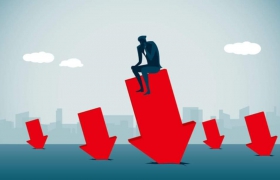
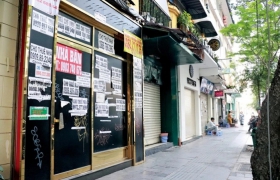


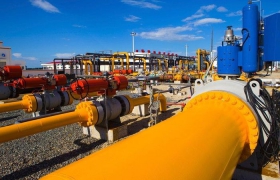




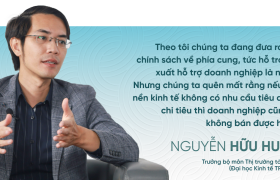
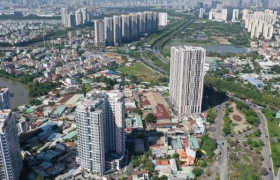
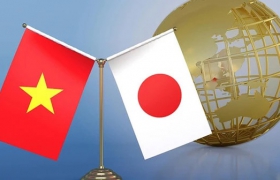
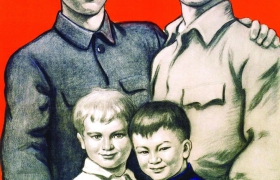
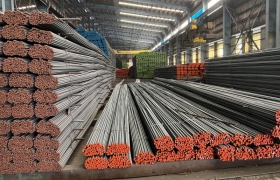







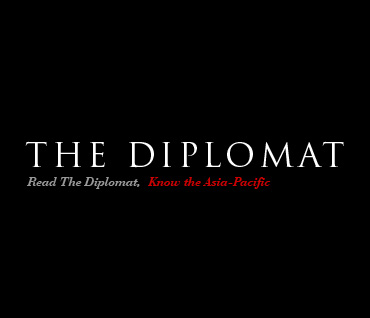
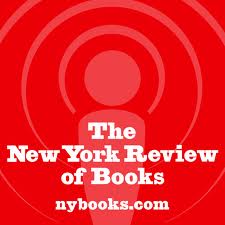
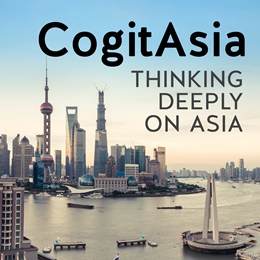


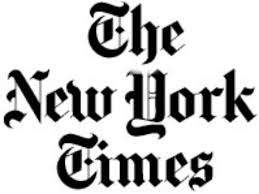

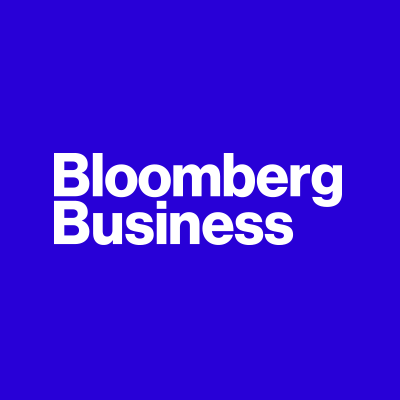
 Yahoo:
Yahoo: 